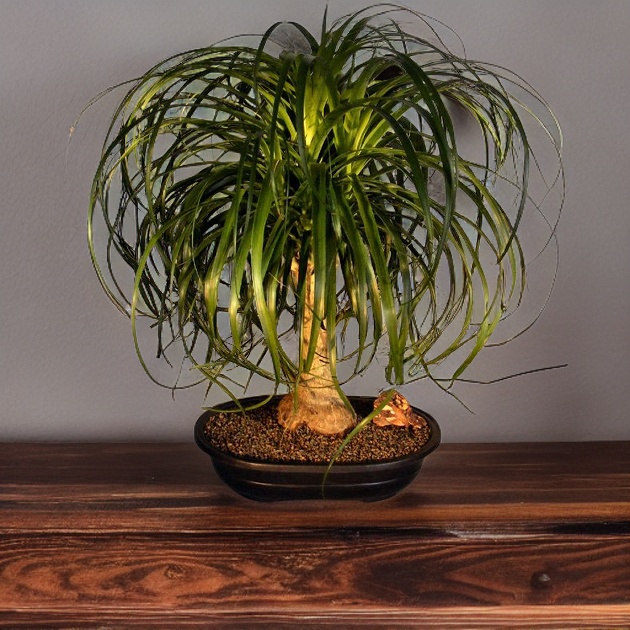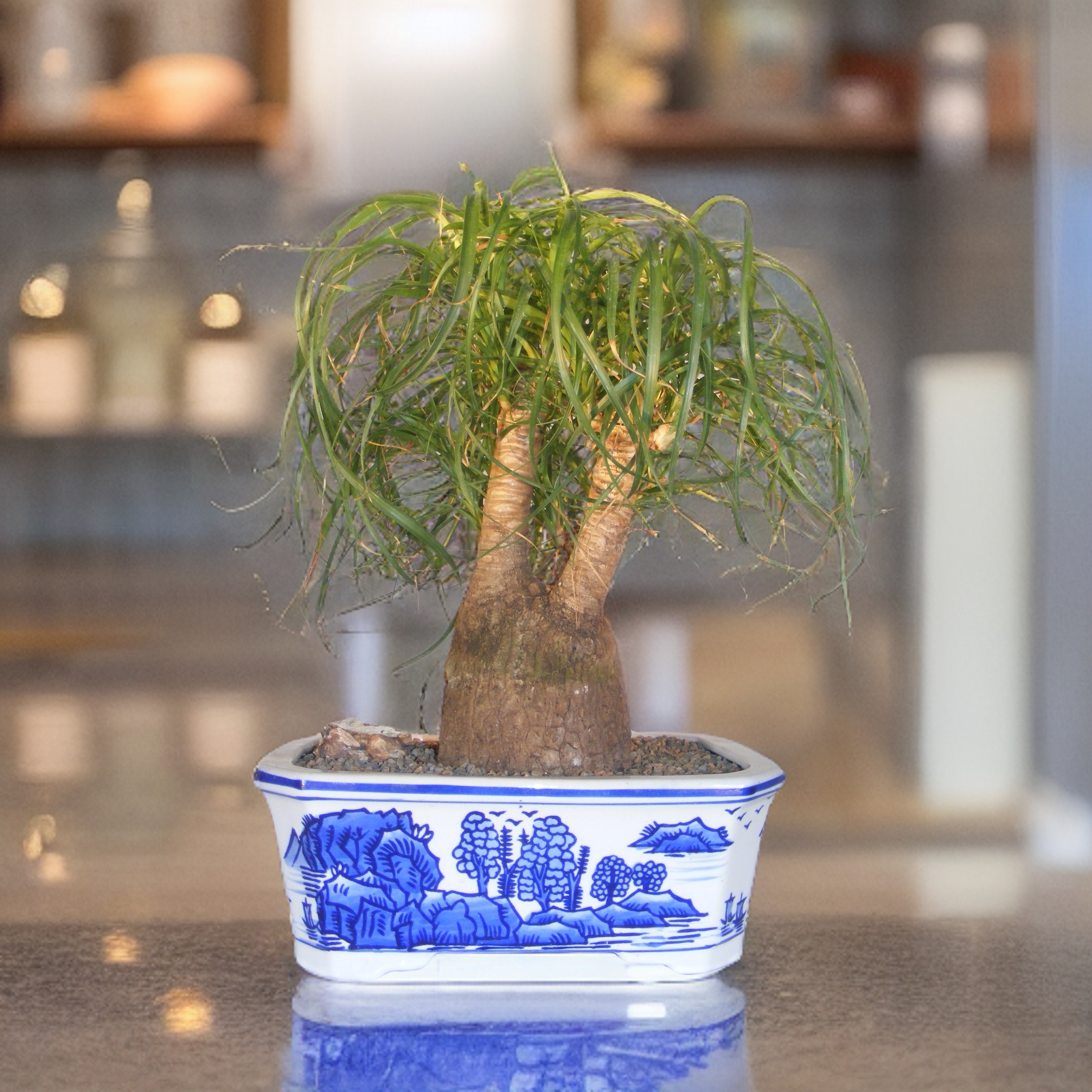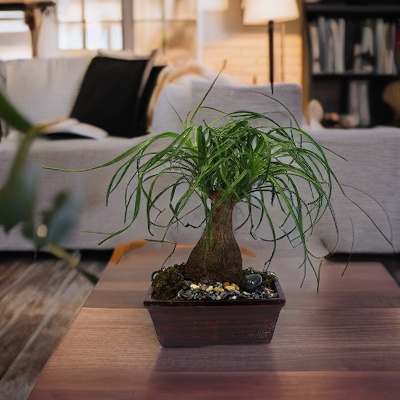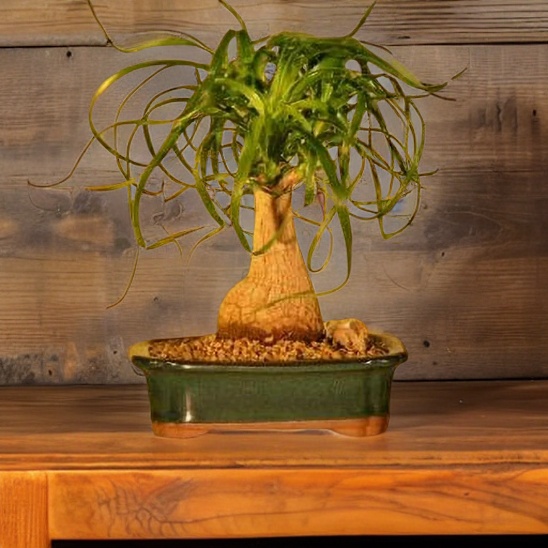HousePlantJoy is supported by our audience. When you purchase through one of our links, we may earn a small affiliate commission. As an Amazon Associate I earn from qualifying purchases. Your cost is not affected.
==================
Are you looking for a unique and stunning bonsai tree that can add a touch of beauty to your living space? Look no further than the Ponytail Palm Bonsai Tree. This fantastic plant, known for its long, curly leaves resembling a ponytail, is an eye-catching addition to any room.
This blog post will cover everything you need to know about the Ponytail Palm Bonsai Tree. From understanding what it is and why it’s considered a great bonsai tree to tips on caring for it and overcoming any challenges in growing it. Whether you’re new to bonsai or an experienced gardener, this post will provide the information you need to create stunning Ponytail Palm Bonsai Trees.
I love the ponytail palm bonsai tree and find it a fascinating miniature tropical plant. One of its most striking features is the thickening of the trunk, which resembles an elephant’s foot.
This hardy plant thrives in low-light conditions and has a slow-growing nature. To care for a palm bonsai tree, providing it with afternoon shade and periodic trimming is important.
Additionally, using liquid fertilizer and a thin layer of pruning paint can help maintain its health. Trimming is best done in late spring or early summer. You can successfully cultivate a stunning palm bonsai tree by understanding these care instructions.
What is a Ponytail Palm Bonsai Tree?
Discover the unique features of the ponytail palm bonsai tree, such as its swollen trunk base and miniature shape. Learn about its care instructions for watering, light, and soil requirements. Find out how this bonsai tree can thrive in low light conditions and infrequent watering. Explore its place in the art of bonsai.
Why is it Considered a Great Bonsai Tree?
What sets the ponytail palm bonsai tree apart is its striking trunk texture and swollen base, which are highly regarded in bonsai art. Its hardy nature allows it to withstand dry spells and low humidity, while its miniature shape adds an eye-catching accent to any space.
Caring for Your Ponytail Palm Bonsai Tree
Caring for your ponytail palm bonsai tree is essential for its health and longevity. To ensure proper care, it’s important to learn the specific instructions for growing this unique bonsai indoors.
This includes understanding its light and watering requirements and the best time of year for fertilizing. Pruning the tree is also crucial to maintain its desired form.
A humidity tray can also mimic the palm bonsai’s tropical environment. Following these care instructions can help your bonsai thrive and showcase its most striking features.
Video Credit: @TheBonsaiZone
Care Instructions for Indoor Ponytail Palm Bonsai Tree
To ensure the health and longevity of your indoor ponytail palm bonsai tree, it’s essential to follow proper care instructions.
- Provide the tree with bright, indirect light.
- Water it thoroughly when the soil feels dry.
- Avoid overwatering. It prefers being slightly dry.
- Fertilize the tree during late spring or early summer with a liquid fertilizer to promote growth.
- Periodic trimming and pruning help maintain its desired shape.
- Use a humidity tray to create an ideal growing environment for this hardy plant.
Proper Handling and Maintenance of Your Bonsai Tree
Learning the proper techniques for handling the ponytail palm bonsai tree helps avoid any damage to its trunk and foliage.
- When watering, find the balance between dry spells and excess water for the tree’s health.
- Pruning techniques for the palm bonsai tree promote new growth and maintain its desired shape.
- Repotting the tree following care instructions ensures a healthy root system.
- During the winter months, protect it from cold temperatures.
How to Overcome Common Ponytail Palm Bonsai Tree Growing Challenges
Overcoming challenges in growing a ponytail palm bonsai tree requires the right techniques.
- Address low light conditions by using grow lights
- Ensure proper humidity and watering during the growing season.
- Promote healthy growth by understanding the needs of the tree and potting it with good bonsai soil.
- Maintain a balanced root system through appropriate water and airflow.
Grow A Beautiful Ponytail Palm Bonsai Tree
Growing a ponytail palm bonsai tree requires patience, care, and attention to detail. Understanding the unique characteristics of the ponytail palm bonsai tree and providing proper care instructions are essential for its successful growth. We consider it a great bonsai tree because of its striking appearance and ability to thrive in indoor environments.
However, you may encounter challenges along the way. By learning to overcome these common growing challenges, you can ensure your bonsai tree remains healthy and beautiful. With dedication and knowledge, you can create stunning palm bonsai trees that will be admired by all.
Frequently Asked Questions
How do I shape my ponytail palm bonsai tree to achieve the desired look?
To achieve the desired look for your bonsai tree, you can use pruning shears to trim branches and foliage and wire branches to guide their shape. Use a bonsai clipper to remove unwanted buds and leaves. Regularly inspect and prune as needed to maintain the desired shape.
Are there any special considerations for indoor vs outdoor ponytail palm bonsai trees?
When it comes to growing ponytail palm bonsai trees, you can grow them indoors or outdoors. Indoor bonsai trees require bright but indirect light and moderate humidity, while outdoor ones prefer full sun and well-draining soil. Consider your area’s temperature and climate when deciding where to grow your bonsai tree.
What are some common mistakes to avoid when caring for a ponytail palm bonsai tree?
Common mistakes to avoid when caring for your bonsai tree include overwatering, using improper soil and pots without drainage holes, exposing the tree to direct sunlight or low-light areas, and pruning too much foliage at once.
What are the basic principles of bonsai tree care?
Understanding the essential principles of bonsai tree care is crucial for maintaining healthy and thriving plants. These principles include proper watering to avoid overwatering, using suitable soil and fertilizer, regular pruning and shaping, and providing adequate sunlight or artificial light sources for optimal growth.
Learn More About Houseplants!
Discover more types of houseplants, their benefits, and how to care for them with us! Join us on Facebook, Instagram, and Twitter for beautiful photos, plant care tips, and a community that celebrates the joy of indoor gardening.
Facebook: https://www.facebook.com/houseplantjoyblog
Instagram: http://instagram.com/houseplantjoy20
Twitter: https://twitter.com/HouseplantJoy
Let’s nurture our green spaces together!






